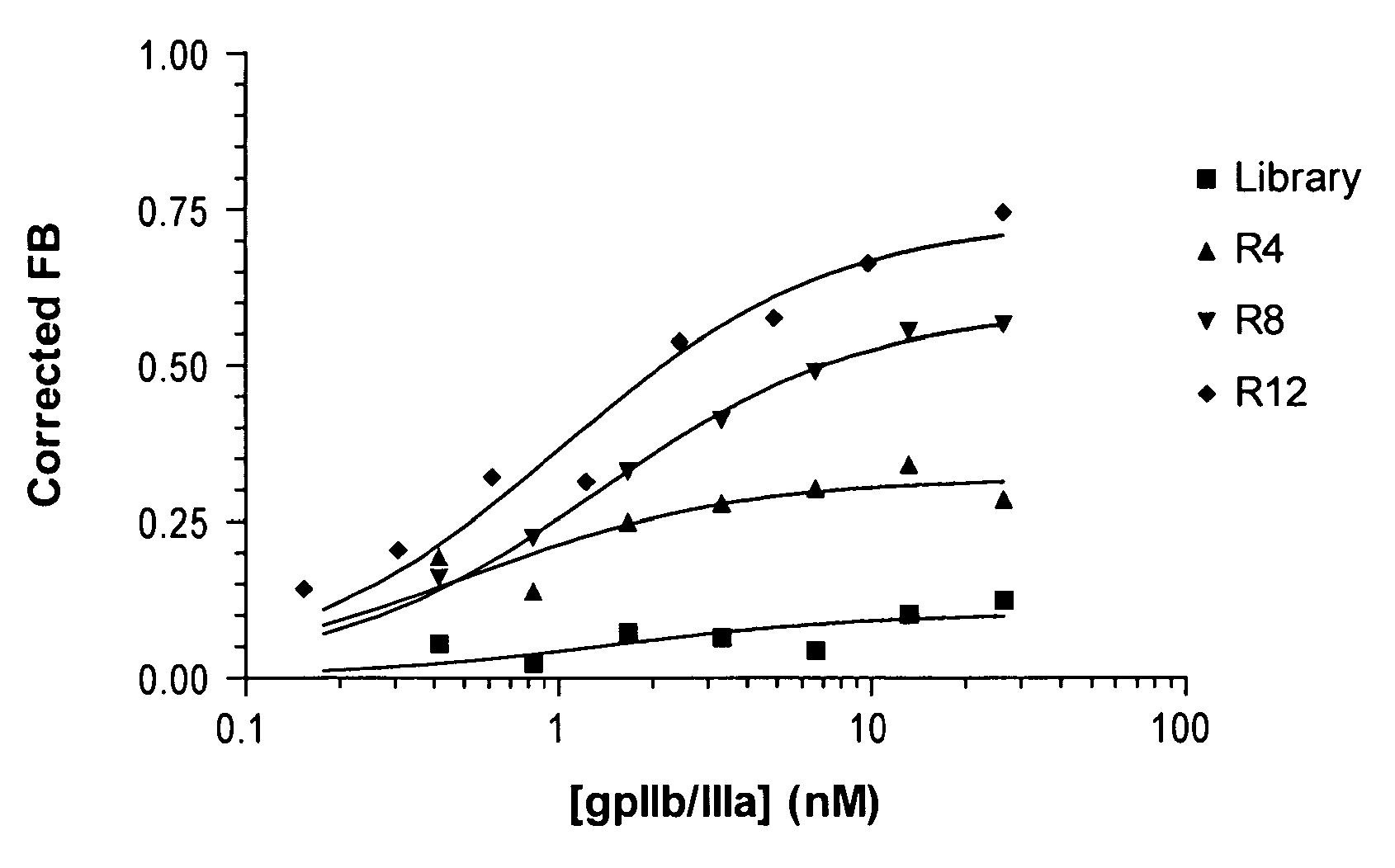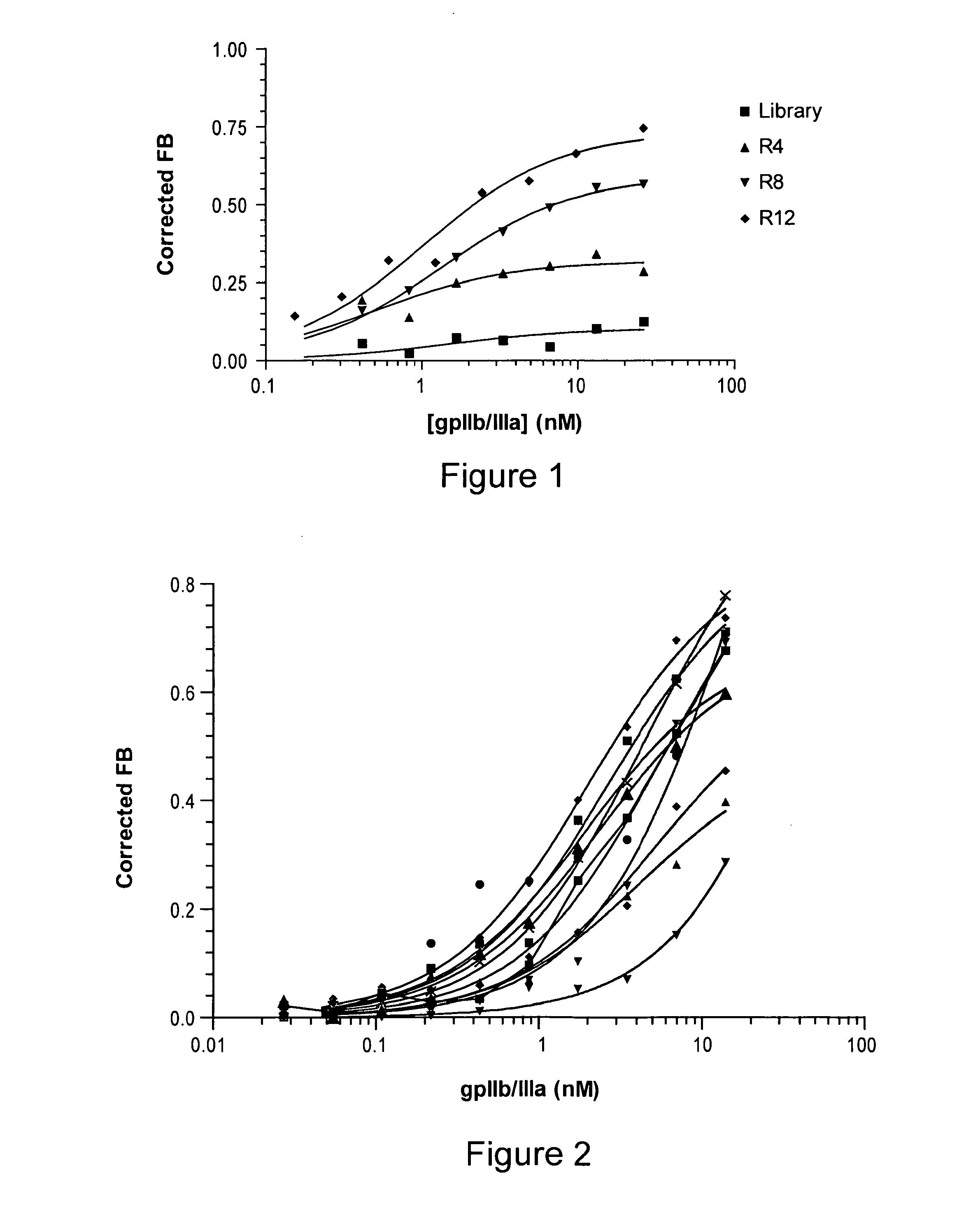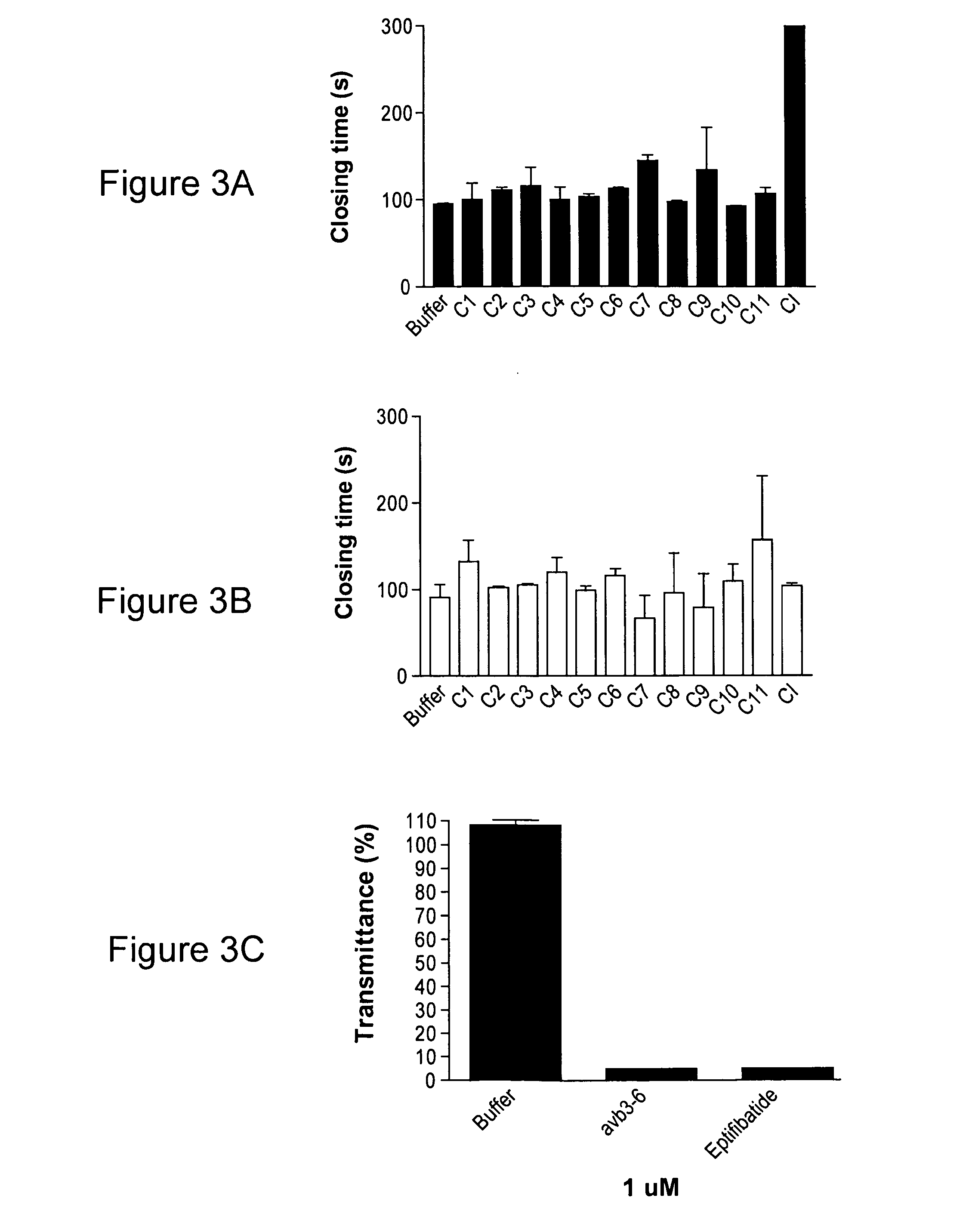Reversible platelet inhibition
a platelet and reversed technology, applied in the direction of drug compositions, peptide/protein ingredients, extracellular fluid disorders, etc., can solve the problem of needing to turn off or reverse the activity of platelets quickly
- Summary
- Abstract
- Description
- Claims
- Application Information
AI Technical Summary
Benefits of technology
Problems solved by technology
Method used
Image
Examples
example 1
Experimental Details
[0042]Binding gpIIb / IIIa to Plates
[0043]An enzyme linked immunosorbant assay (ELISA) was used to assess gpIIb / IIIa adherence to Immulon 4HBX plates. Briefly, 100 ρmol gpIIb / IIIa was incubated with the Immulon 4HBX plates at 4° C. overnight. After washing 5× with TMB buffer (20 mM Hepes, pH: 7.4; 120 mM NaCl; 5 nM KCl; 1 mM CaCl2; 1 mM MgCl2; 0.01% BSA), wells were blocked with 1% BSA at room temperature for 1 h. The wells were washed 5× and incubated at 37° C. for 2 hrs with 10 μg / mL CD41, a mouse anti-human antibody that recognizes the gpIIb / IIIa complex), CD61 (a mouse anti-human antibody that recognizes the (β3-subunit of the protein (Southern Biotechnology Associates, Birmingham, Ala.)) or buffer. After washing 5×, 1:80,000 (v / v) goat anti-mouse IgG-HRP (Jackson ImmunoResearch Laboratories, Inc., West Grove, Pa.) was added and incubated at room temperature for 2 h. The wells were washed 5× and TMB substrate (Sigma-Aldrich, St. Louis, Mo.) was added. The plate...
example 2
[0064]Over the past decade, much research has elucidated the important role of platelets in cardiovascular disease. Excessive accumulation of platelets on atherosclerotic plaques is an essential aspect of thrombus formation, which, in turn, is responsible for the development of acute coronary syndromes like stroke and arterial thrombosis. A number of anti-platelet drugs exist that are routinely used in clinics. Aspirin inhibits thromboxane A2 and was the first anti-platelet agent used clinically. Clopidogrel and Ticlopidine inhibit ADP receptors PIIY1 and PIIY12 and Abciximab, Eptifibatide and Tirofiban are gpIIb / IIIa inhibitors, the most potent class of anti-platelet compounds to date. While these drugs have shown remarkable clinical efficiency in reducing the morbidity and mortality associated with thrombosis, these agents have a number of drawbacks, most significant of which is hemorrhage. Therefore, a pressing need exists for anti-platelet drugs with improved safety profiles tha...
example 3
[0067]To generate a safer, antidote-controllable VWF inhibitor, the decision was made to exploit the properties of nucleic acid ligands termed aptamers. As noted above, aptamers are single-stranded nucleic acid molecules that can directly inhibit protein function by binding to their targets with high affinity and specificity (Nimjee, Rusconi et al, Trends Cardiovasc. Med. 15:41-45 (2005)). To isolate RNA aptamers against VWF, a modified version of. SELEX (Systematic Evolution of Ligands by EXponential enrichment), termed “convergent” SELEX, was performed. These aptamers bind to VWF with high affinity (Kd<20 nM) and inhibit platelet aggregation in Platelet Function Analyzer (PFA-100) and ristocetin induced platelet aggregation (RIPA) assays. Moreover, an antidote molecule that can quickly reverse such aptamers' function has been nationally designed. This antidote molecule can give physicians better control in clinics, enhancing the aptamers' safety profile.
Experimental Details
Generat...
PUM
| Property | Measurement | Unit |
|---|---|---|
| volume | aaaaa | aaaaa |
| closing time | aaaaa | aaaaa |
| temperature | aaaaa | aaaaa |
Abstract
Description
Claims
Application Information
 Login to View More
Login to View More - R&D
- Intellectual Property
- Life Sciences
- Materials
- Tech Scout
- Unparalleled Data Quality
- Higher Quality Content
- 60% Fewer Hallucinations
Browse by: Latest US Patents, China's latest patents, Technical Efficacy Thesaurus, Application Domain, Technology Topic, Popular Technical Reports.
© 2025 PatSnap. All rights reserved.Legal|Privacy policy|Modern Slavery Act Transparency Statement|Sitemap|About US| Contact US: help@patsnap.com



